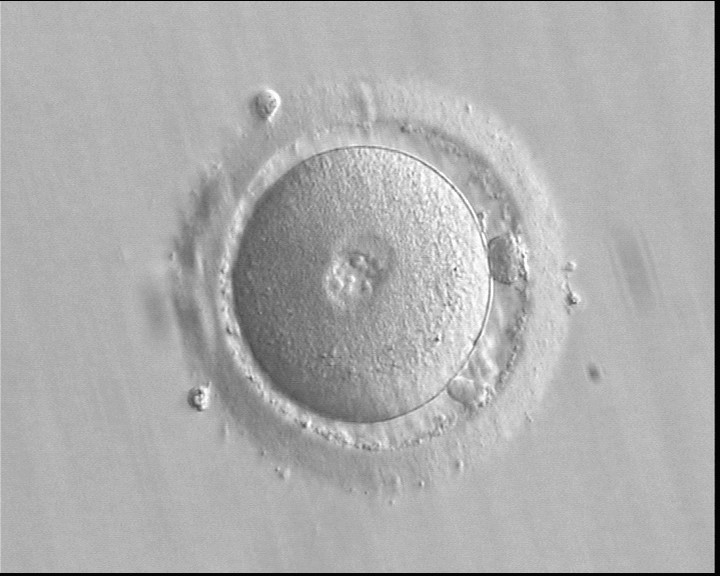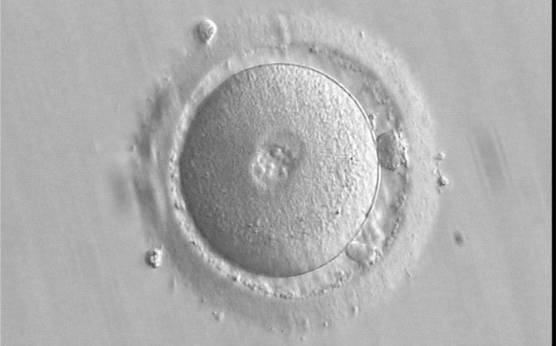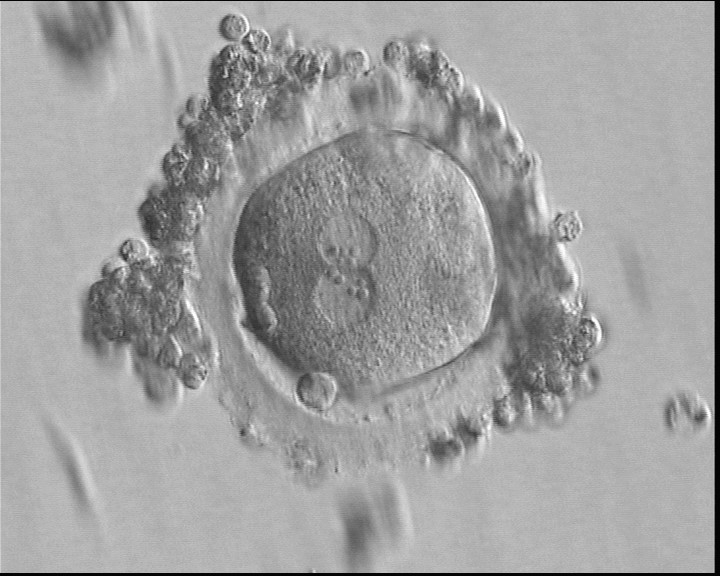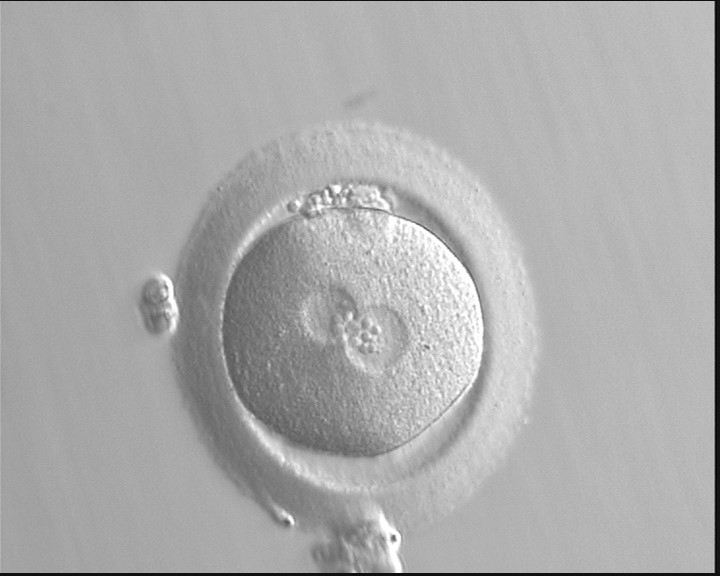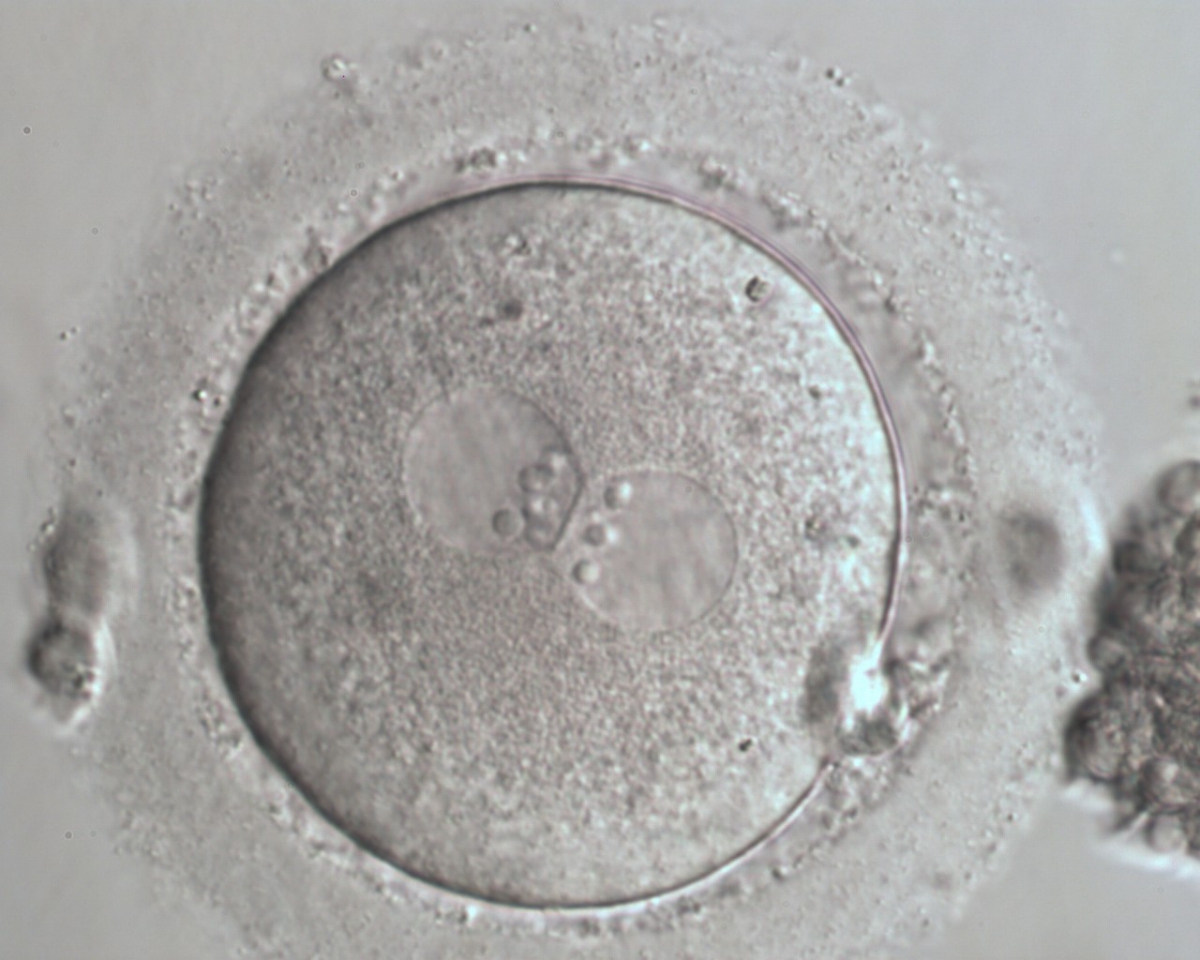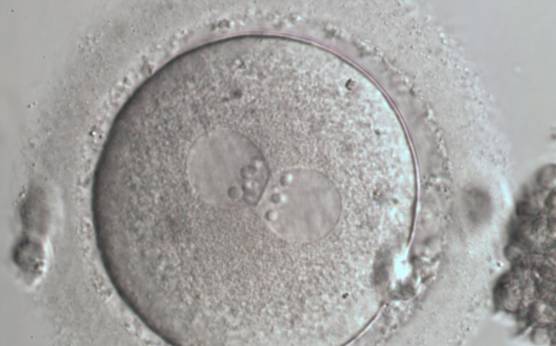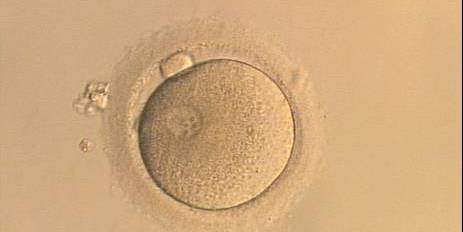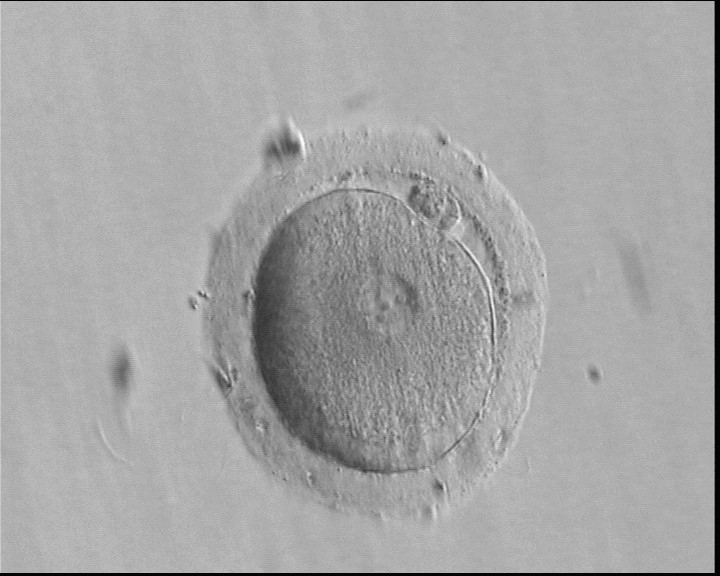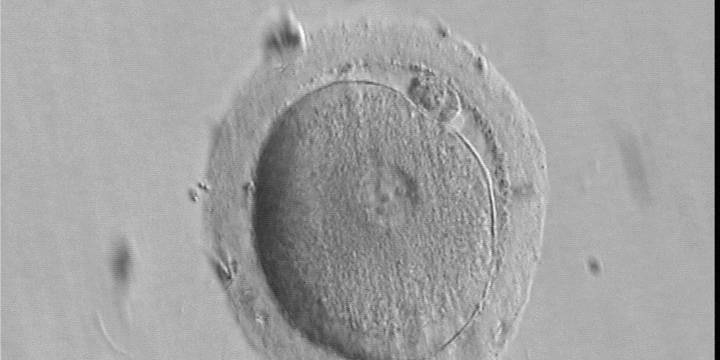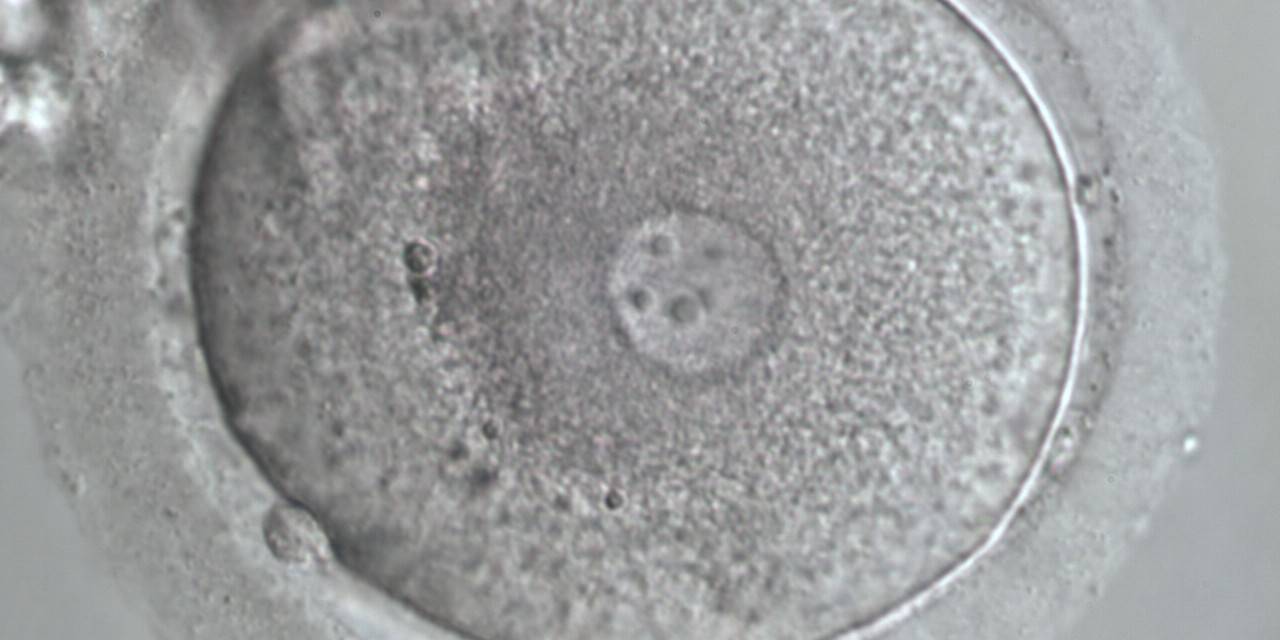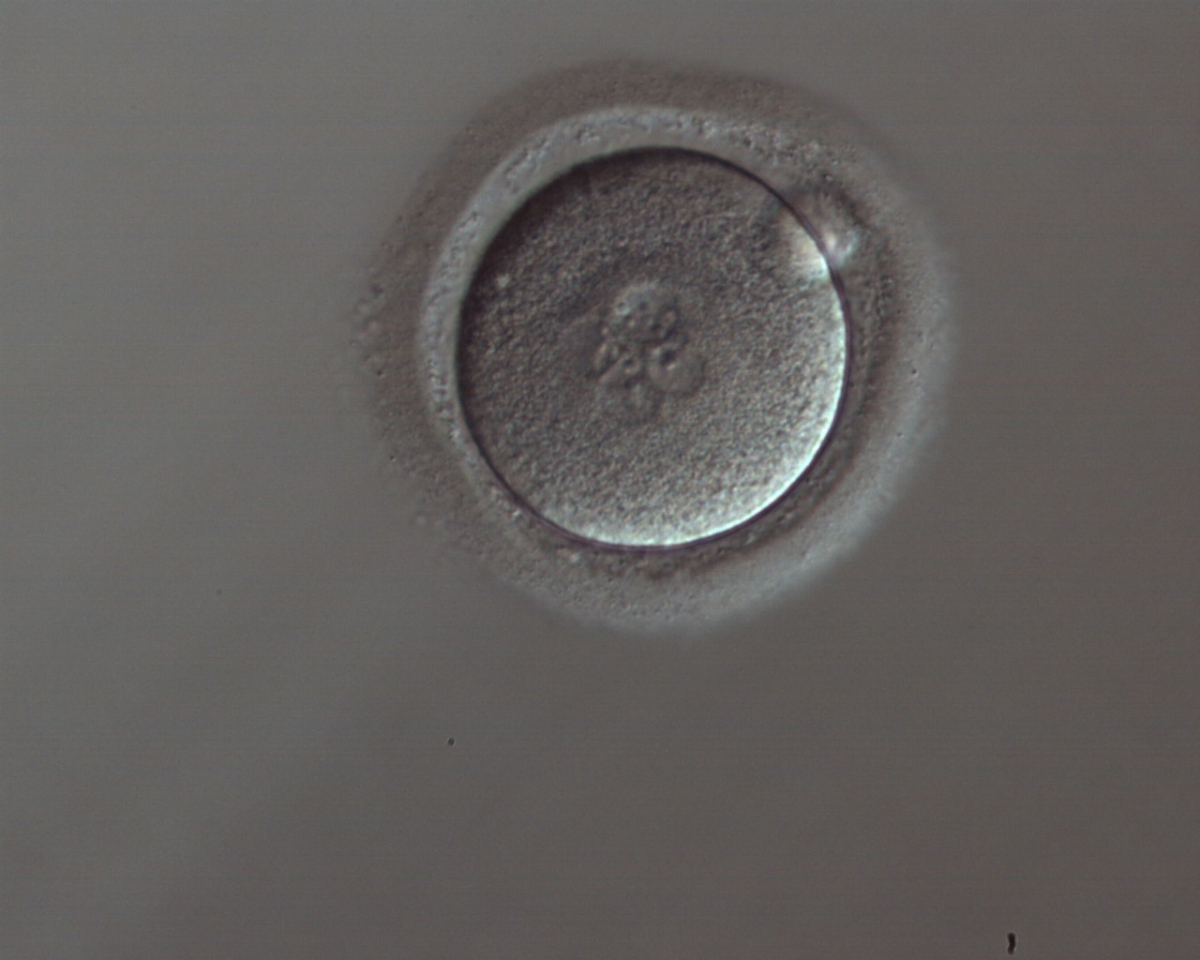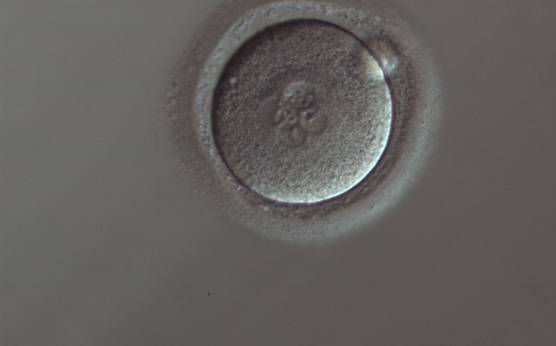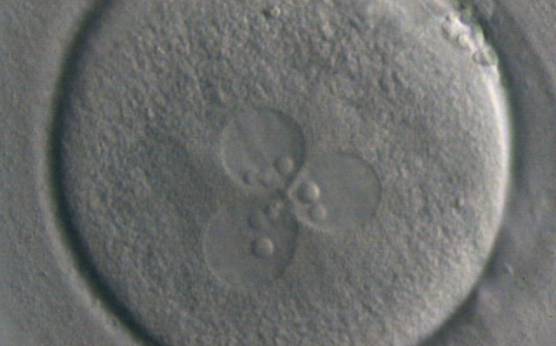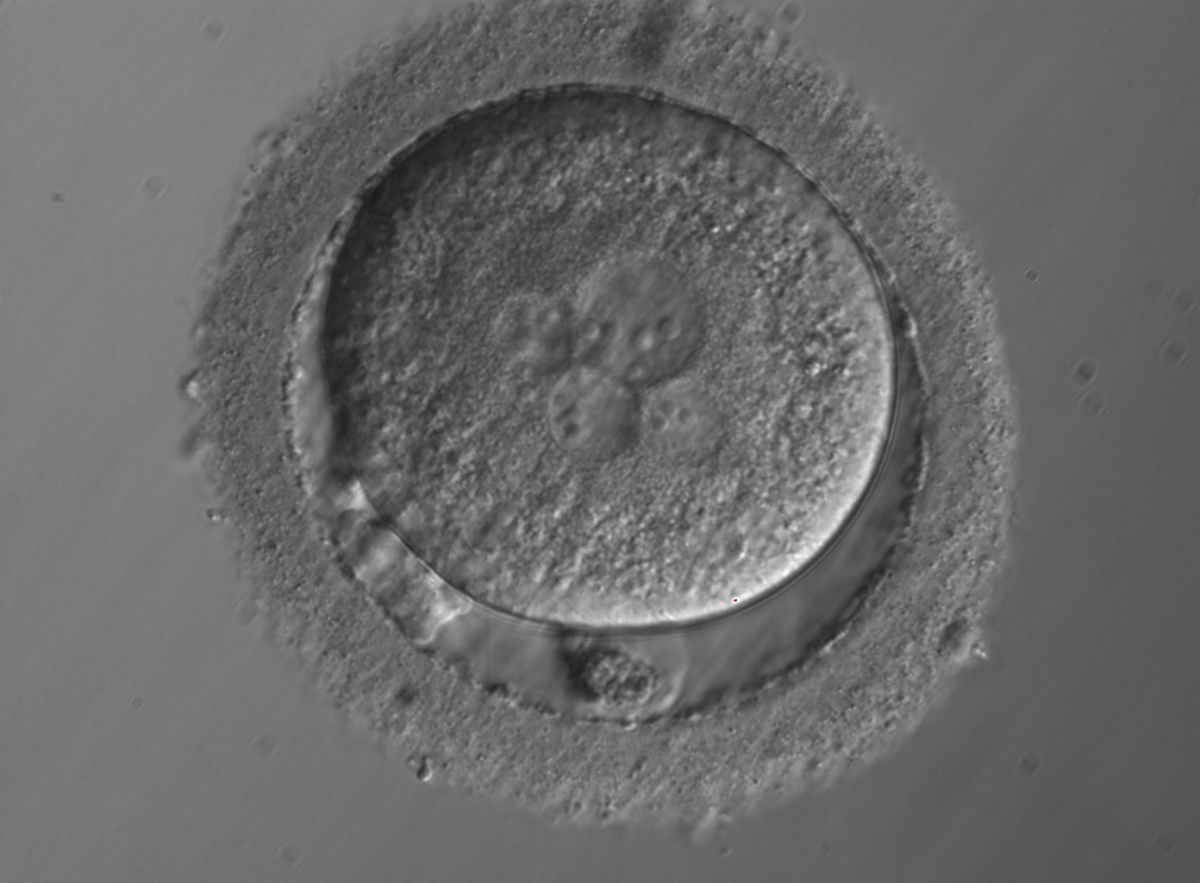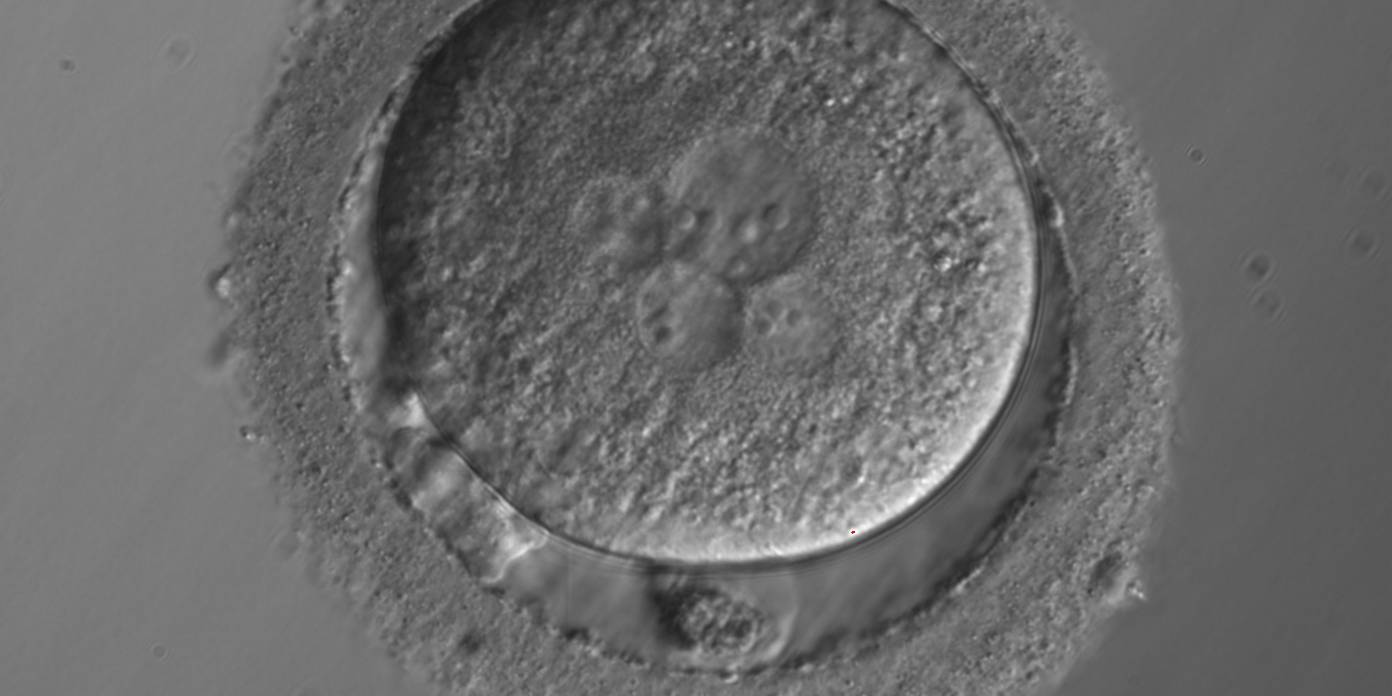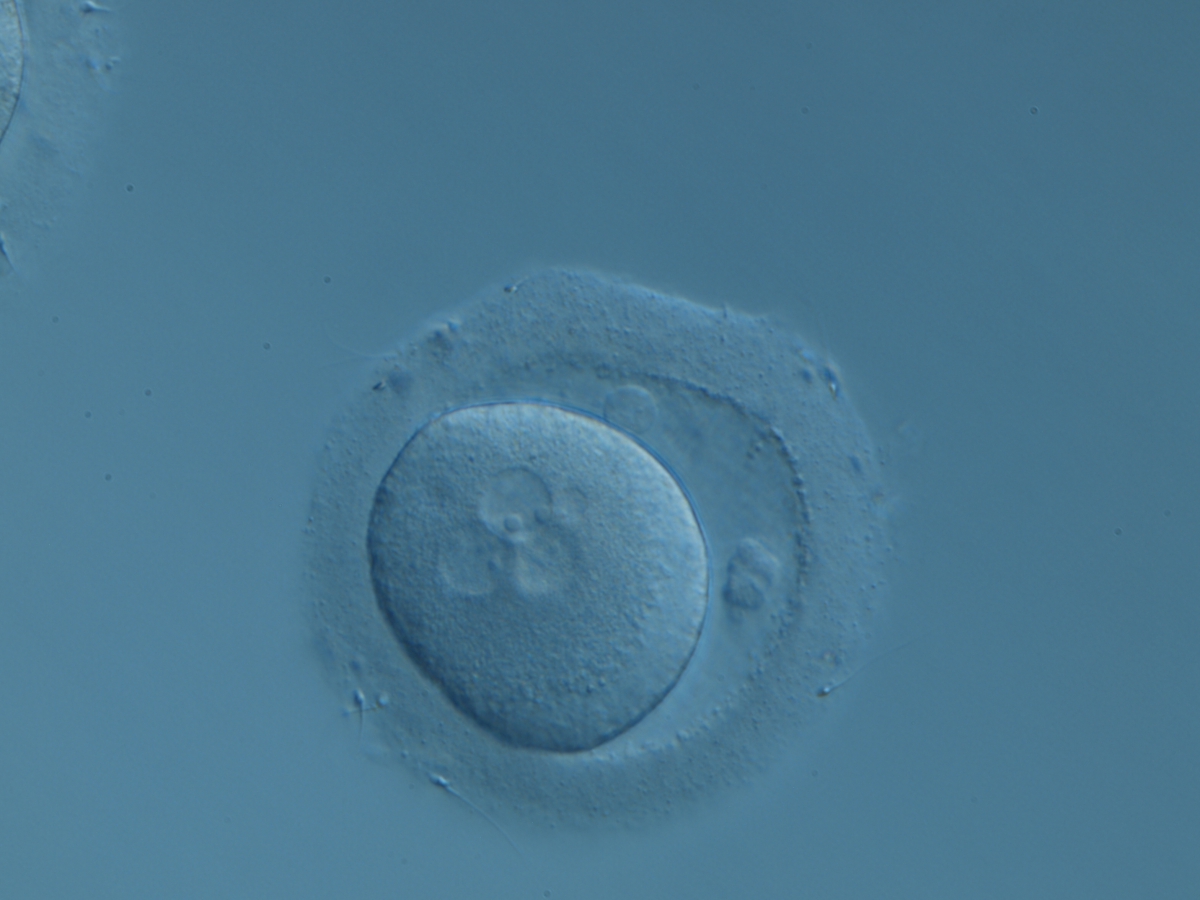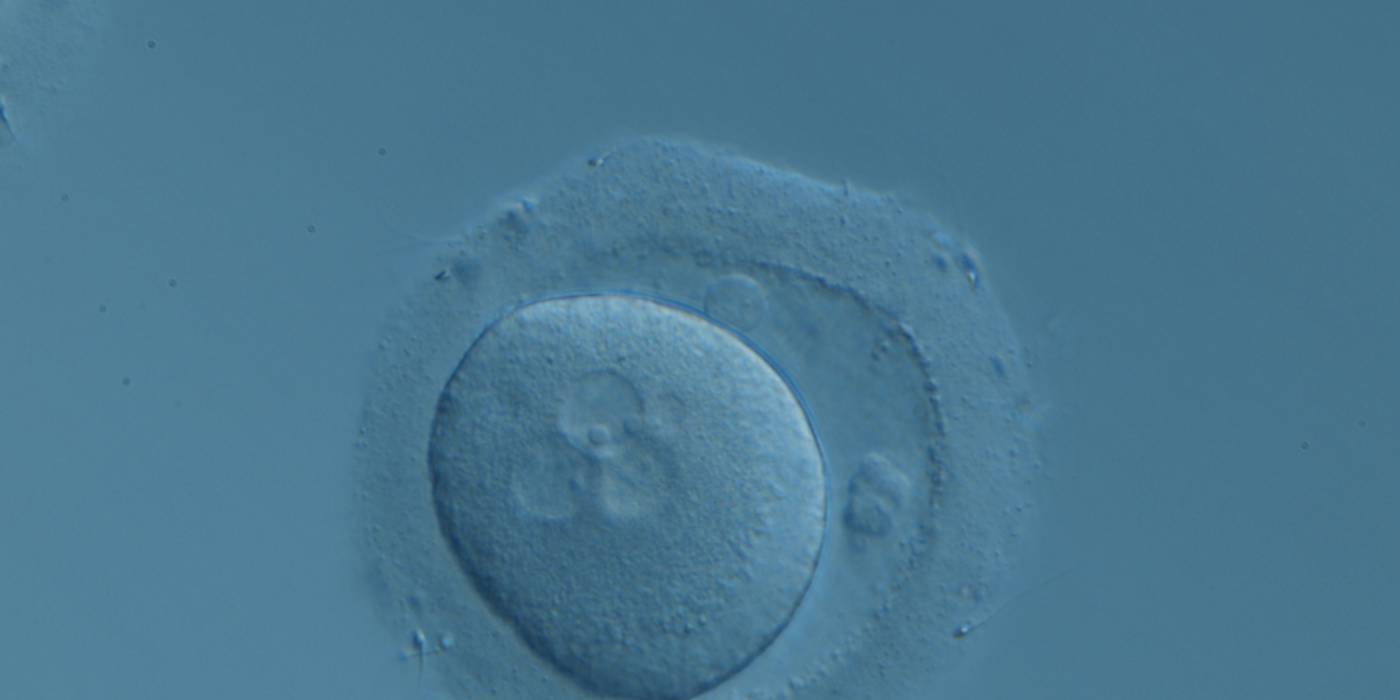A. Fertilization assessment
A.1 2PN
When assessments are performed 17 ± 1 h post-insemination, taking into consideration that pronuclear formation in IVF zygotes lags ∼1 h behind ICSI zygotes, normally fertilized oocytes should be spherical and have two polar bodies and two PNs (Figs 85–87). PNs should be juxtaposed, approximately the same size, centrally positioned in the cytoplasm with two distinctly clear, visible membranes (Fig. 88). The presence of an equal number and size of NPBs aligned at the PN junction has been correlated with increased embryo competence (Tesarik and Greco, 1999; Tesarik et al., 2000; Scott, 2003).
A.2 1PN
The incidence of one pronucleates is around 1% after IVF or ICSI and may be parthenogenetic in origin as suggested by chromosomal analysis that shows a haploid set in approximately half of the studied oocytes (Plachot, 2000). In some cases, only one polar body is extruded into the perivitelline space (PVS) (Fig. 89).
The presence of 1PN can also be a result of errors in the fertilization process with asynchrony in PN formation or PN fusion. In these cases, the resulting oocyte could have a diploid set of chromosomes, and two polar bodies are normally observed (Figs 90–93). The transfer of these oocytes could be considered, but the incidence of aneuploidy in the resulting embryos has been reported to be significantly higher compared with embryos derived from 2PN oocytes (Yan et al., 2010).
A.3 ≥3PN
The formation of triploid zygotes differs in origin, depending on whether they are generated by ICSI or IVF. Only 1% of oocytes after ICSI result in tripronuclear zygotes and are digynic due to failure in extrusion of the second polar body (Fig. 94). An exception is represented by giant oocytes (Fig. 95) that follow different patterns of extrusion due to their generally diploid condition (see Chapter One).
Diandry is the most probable cause of tripronucleates following IVF and occurs in ∼5% of inseminated oocytes (Fig. 96). This condition arises from the entry of two spermatozoa into the cytoplasm owing to the incapacity of the oocyte to trigger protection against polyspermy. The second polar body is normally extruded and cleavage often occurs. In some cases, the presence of multiple PNs could be due to failed cytokinesis (Figs 94 and 97) or to penetration by a binucleate spermatozoon (Fig. 98).
Article references:
Plachot M. Fertilization. Hum Reprod 2000;15(Suppl. 4):19-30.
FREE Full Text
Scott L. Pronuclear scoring as a predictor of embryo development. Reprod Biomed Online 2003;6:201-214.
CrossRef | Medline | Google Scholar
Tesarik J, Greco E. The probability of abnormal preimplantation development can be predicted by a single static observation on pronuclear stage morphology. Hum Reprod 1999;14:1318-1323.
Abstract/FREE Full Text
Tesarik J, Junca AM, Hazout A, Aubriot FX, Nathan C, Cohen-Bacrie P, Dumont-Hassan M. Embryos and high implantation potential after intracytoplasmic sperm injection can be recognized by a simple, non- invasive examination of pronuclear morphology. Hum Reprod 2000;15:1396-1399.
Abstract/FREE Full Text
Yan J, Li Y, Shi Y, Feng HL, Gao S, Chenz Z. Assessment of sex chromosomes of human embryos arising from monopronucleus zygotes in in vitro fertilization and intracytoplasmic sperm injection cycles of Chinese women. Gynecol Obstet Invest 2010;69:20-23.
CrossRef | Medline | Google Scholar

